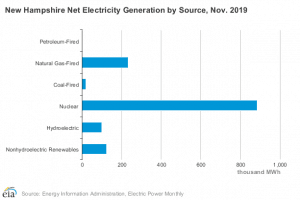DC power supplies
An AC-to-DC power supply works on an AC input voltage and creates a DC yield voltage. Contingent upon application prerequisites the resulting voltage might contain huge or insignificant sums of AC recurrence parts known as wave voltage, connected with AC input voltage recurrence and the power supply’s activity. A DC power supply working on DC input voltage is known as a DC-to-DC converter. This Express Energy part centers for the most part around the AC-to-DC variation.
Linear power supply
In a linear power supply, the AC input voltage goes through a power transformer and is then corrected and sifted to acquire a DC voltage. The separating lessens the sufficiency of AC mains recurrence present in the rectifier yield and can be just about as basic as a solitary capacitor or more complicated, for example, a pi channel. In some battery charging applications, the power supply comprises only a transformer and a diode, with a straightforward resistor put at the power supply result to restrict the charging current.
Switched-mode power supply
In a switched-mode power supply (SMPS), the AC mains input is straightforwardly amended and afterwards sifted to get a DC voltage. The subsequent DC voltage is then switched on and off at a high recurrence by electronic exchanging hardware, in this manner creating an AC that will go through a high-recurrence transformer or inductor. Exchanging happens at an exceptionally high recurrence (ordinarily 10 kHz — 1 MHz), consequently empowering the utilization of transformers and channel capacitors that are a lot more modest, lighter, and more affordable than those found in linear power supplies working at mains recurrence. After the inductor or transformer is optional, the high recurrence AC is corrected and sifted to create the DC yield voltage. Assuming the SMPS utilizes a sufficiently protected high-recurrence transformer, the result will be electrically separated from the mains; this component is many times fundamental for wellbeing.
Switched-mode power supplies are generally directed, and to keep the resulting voltage steady, the power supply utilizes a criticism regulator that screens the current drawn by the heap.
SMPSs frequently incorporate security elements, for example, current restricting or a crowbar circuit to assist with safeguarding the gadget and the client from harm. If an unusual high-current power draw is identified, the switched-mode supply can accept this as an immediate short and will close itself down before harm is finished. PC power supplies frequently give a power decent sign to the motherboard; the shortfall of this sign forestalls activity when strange supply voltages are available.

The switch-mode power supplies utilized in PCs have generally had low power factors and have additionally been critical wellsprings of line obstruction (because of incited power line music and drifters). In straightforward switch-mode power supplies, the info stage might misshape the line voltage waveform, which can unfavourably influence different loads (and result in unfortunate power quality for other utility clients), and cause superfluous warming in wires and dispersion gear. Moreover, clients cause higher electric bills while working lower power factor loads. To evade these issues, some PC switch-mode power supplies perform power factor remedies and may utilize input channels or extra changing stages to diminish line impedance.
Capacitive power supply
A capacitive power supply (transformerless power supply) utilizes the reactance of a capacitor to lessen the mains voltage to a more modest AC voltage. Regularly, the subsequently decreased AC voltage is then amended, separated, and controlled to create a steady DC yield voltage.
The voltage decrease capacitor should endure the full mains voltage, and it should likewise have sufficient capacitance to help the greatest burden current at the evaluated yield voltage. Taken together, these limitations limit reasonable purposes of this kind of supply to low-power applications.


